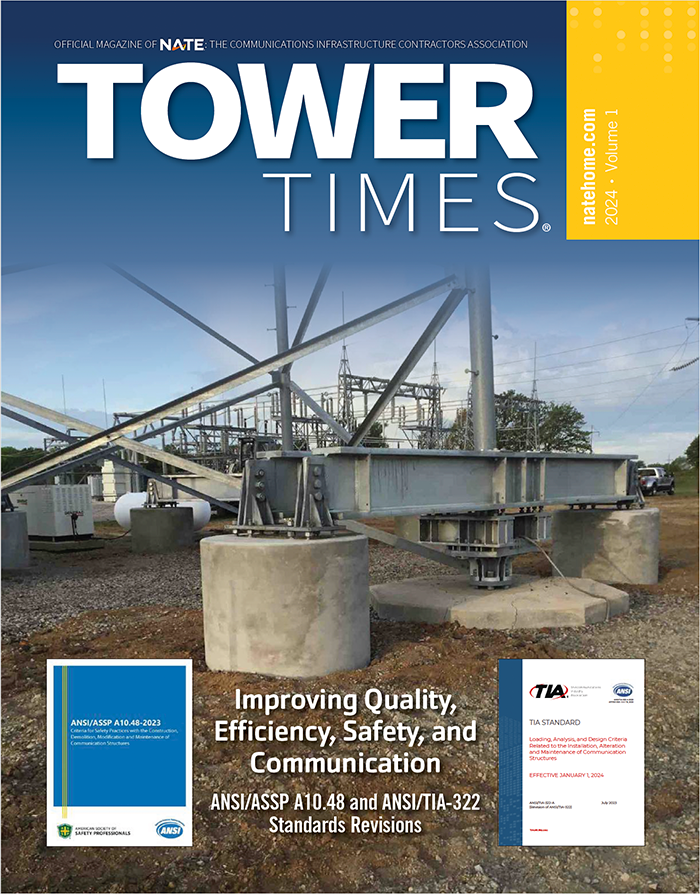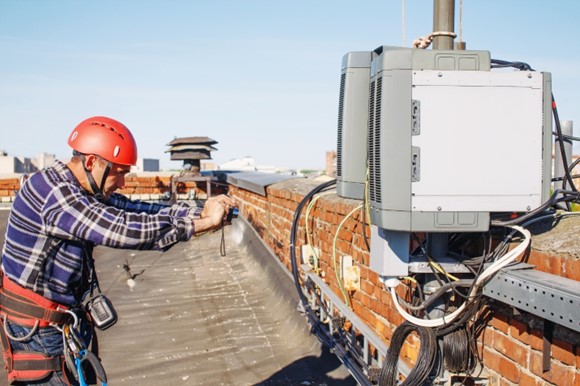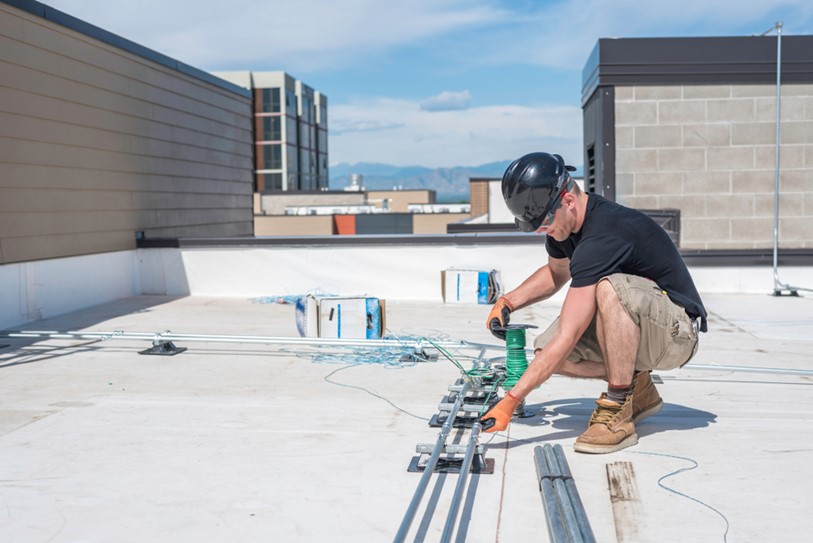
DAS and Indoor Wireless Installations: NATE Contractors Are Perfect for This Work
SBC Managing Director John Foley contributed this article to the NATE Tower Times
Posted on January 22, 2024
SBC Managing Director John Foley is a member of the NATE DAS and Small Cell Committee. John contributed this article to the NATE Tower Times 2024 Volume 1 Publication. In this article, John invites NATE members to explore the opportunity of participating in the in-building public safety wireless sector. SBC Knowledge Partner NATE is The Communications Infrastructure Contractors Association. NATE is a non-profit trade association providing a unified voice for tower erection, maintenance and service companies.
In-building wireless coverage for cellular and public safety communications is an increasingly essential capability for building occupants as well as for the public safety teams who protect them in critical moments.
 While cellular coverage is and has been a market-driven requirement, public safety in-building coverage for both narrowband and broadband wireless has been a mandated requirement since 2009, driven by increasing adoption and enforcement of building and fire codes that specify coverage area and signal quality standards. In addition to LMR bands, FirstNet, Built with AT&T broadband frequencies are beginning to be added to some jurisdictions‘ requirements.
While cellular coverage is and has been a market-driven requirement, public safety in-building coverage for both narrowband and broadband wireless has been a mandated requirement since 2009, driven by increasing adoption and enforcement of building and fire codes that specify coverage area and signal quality standards. In addition to LMR bands, FirstNet, Built with AT&T broadband frequencies are beginning to be added to some jurisdictions‘ requirements.
Additional drivers for growth in the in-building wireless space include wider use of energy-efficient materials that block or significantly reduce wireless signal penetration into buildings, creating a need for solutions that ensure reliable wireless coverage despite the poor penetration.
Business Opportunity
In-building cellular coverage has been provided traditionally using Indoor Distributed Antenna Systems (iDAS). There are three common business models for such deployments:
- Carrier-funded
- Owner-funded
- Neutral Host Third-Party Operators (3POs).
The business challenges surrounding in-building cellular iDAS stem from the relatively tight concentration of customers and long lead times typically associated with these projects. As carrier spending has tightened there is much less investment from the carriers for in-building.
In contrast, in-building public safety wireless – enabling the narrowband and broadband coverage needed by first responders – is mandated by fire and building codes, and also increasingly by the private risk-management standards of businesses with larger real estate portfolios, such as big-box stores, grocery chains, self-storage facilities, data centers, healthcare, hotel and hospitality, and retail. This opens the potential for direct sales relationships with thousands of businesses.
Codes are most commonly enforced on new construction, with issuance of Certificate of Occupancy used as leverage for compliance. This also significantly shortens lead times for these projects, from months or years to as little as weeks. In some markets (like Florida, Ohio, Connecticut, Texas, and others) codes are even being enforced on existing buildings.
Public safety radio coverage is not just for fire fighters. It also includes police, EMS, and other first responders. One of the fastest-growing areas is the K12 school sector. As communities continue to look for strategies to improve school safety, many counties have established funding for these projects. Some have hundreds of schools.
Common Technology, Tools, Skills, and Customer Channels
 The in-building wireless space is adjacent and accessible to most NATE companies. Wireless technologies like antennas, amplifiers, cable, splitters, connectors, fiber transport systems; tools like spectrum analyzers, cable termination, PPE, logistics resources; skills like RF engineering, project management, infrastructure installation and testing, and worker safety programs; and channel relationships like OEMs, distributors, general and electrical contractors, and government agencies - make for a business landscape very familiar to NATE companies.
The in-building wireless space is adjacent and accessible to most NATE companies. Wireless technologies like antennas, amplifiers, cable, splitters, connectors, fiber transport systems; tools like spectrum analyzers, cable termination, PPE, logistics resources; skills like RF engineering, project management, infrastructure installation and testing, and worker safety programs; and channel relationships like OEMs, distributors, general and electrical contractors, and government agencies - make for a business landscape very familiar to NATE companies.
"The in-building wireless space is adjacent and accessible to most NATE companies."
Workforce Development, Industry Competency, and Certification
While much has been made about the “5G workforce” (does anyone know exactly what that is?), a more general call for the intentional development of our wireless infrastructure workforce is needed to keep pace with the needs of our nation’s businesses and rapid wireless expansion in other countries.
Recently, the National Institute for Certification in Engineering Technologies (NICET – www.nicet.org), collaborated with the Safer Buildings Coalition (SBC - www.saferbuildings.org) to create a four-tiered certification program called In-Building Public Safety Communications (IB-PSC). It consists of four levels: Technician I, II, and III, and Designer.
The rapid growth in the in-building public safety wireless sector has been so attractive that non-traditional companies have entered the market, reducing the average experience level (from an RF knowledge standpoint). This has created competency and quality challenges that must be addressed immediately. NATE companies already have the RF pedigree to address these gaps.
SBC Managing Director John Foley will participate in a panel at NATE Unite, which is in Memphis February 19 – 22.
See panel info here:
Ed Session #02 - DAS and Indoor Installations
Monday, February 19 • 9:00 AM - 10:00 AM
Location: LL10
Want to know more?
NATE Members will have two opportunities to delve more deeply into this topic:
- Webinar: DAS and Indoor Wireless Installations for NATE Companies – [date & link]
- NATE Unite Session-Orlando: DAS and Indoor Installations: Monday, Feb 19, 2024, 9a to 10a
John Foley is the Managing Director of the Safer Buildings Coalition, and a member of the NATE Small Cell and DAS Deployment Ad Hoc Committee. He can be reached at 610-291-3856 or [email protected].
To read the article online and the rest of this issue, follow this link NATE Tower Times 2024 Volume 1 Publication.
John’s article begins on page 68.